How to make line follower robot- using Arduino ??
Line follower Robot is a machine which follows a line, either a black line or white line. Basically there are two types of line follower robots: one is black line follower which follows black line and second is white line follower which follows white line. Line follower actually senses the line and run over it.
Concepts of Line Follower
Concept of working of line follower is related to light. We use here the behavior of light at black and white surface. When light fall on a white surface it is almost full reflected and in case of black surface light is completely absorbed. This behavior of light is used in building a line follower robot.
In this arduino based line follower robot we have used IR Transmitters and IR receivers also called photo diodes. They are used for sending and receiving light. IR transmits infrared lights. When infrared rays falls on white surface, it’s reflected back and catched by photodiodes which generates some voltage changes. When IR light falls on a black surface, light is absorb by the black surface and no rays are reflected back, thus photo diode does not receive any light or rays.
Here in this arduino line follower robot when sensor senses white surface then arduino gets 1 as input and when senses black line arduino gets 0 as input.
Circuit Explanation
The whole arduino line follower robot can be divided into 3 sections: sensor section, control section and driver section.
Sensor section:
This section contains IR diodes, potentiometer, Comparator (Op-Amp) and LED’s. Potentiometer is used for setting reference voltage at comparator’s one terminal and IR sensors are used to sense the line and provide a change in voltage at comparator’s second terminal. Then comparator compares both voltages and generates a digital signal at output. Here in this line follower circuit we have used two comparator for two sensors. LM 358 is used as comparator. LM358 has inbuilt two low noise Op-amps.
Control Section:
Arduino Pro Mini is used for controlling whole the process of line follower robot. The outputs of comparators are connected to digital pin number 2 and 3 of arduino. Arduino read these signals and send commands to driver circuit to drive line follower.
Driver section:
Driver section consists motor driver and two DC motors. Motor driver is used for driving motors because arduino does not supply enough voltage and current to motor. So we add a motor driver circuit to get enough voltage and current for motor. Arduino sends commands to this motor driver and then it drive motors.
Working of Line Follower Robot using Arduino
Working of line follower is very interesting. Line follower robot senses black line by using sensor and then sends the signal to arduino. Then arduino drives the motor according to sensors' output.
Here in this project we are using two IR sensor modules namely left sensor and right sensor. When both left and right sensor senses white then robot move forward.
If left sensor comes on black line then robot turn left side.
If right sensor sense black line then robot turn right side until both sensor comes at white surface. When white surface comes robot starts moving on forward again.
If both sensors comes on black line, robot stops.
Code-
int s1= A2;
int s2= A4;
int R1=7;
int R2=8;
int L1=10;
int L2= 11
void setup(){
Serial.begin(115200);
pinMode(s1,INPUT);
pinMode(s2,INPUT);
pinMode(L1,OUTPUT);
pinMode(L2,OUTPUT);
pinMode(R1,OUTPUT);
pinMode(R2,OUTPUT);
}
void loop(){
int s1 = digitalRead(A1);
int s2 = digitalRead(A4);
Serial.print(s1);
Serial.print("\t");
Serial.print(s2);
Serial.print("\t");
//FORWARD
if(s1==1 && s2 == 1){
digitalWrite(R1,HIGH);
digitalWrite(R2,LOW);
digitalWrite(L1,HIGH);
digitalWrite(L2,LOW);
}
}
//TURN LEFT
if(s1 == 0 && s2 == 1){
digitalWrite(R2,LOW);
digitalWrite(R1,LOW);
digitalWrite(L2,HIGH);
digitalWrite(L1,HIGH);
}
//TURN RIGHT
if(s1 == 1 && s2 == 0){
digitalWrite(R2,HIGH);
digitalWrite(R1,HIGH);
digitalWrite(L2,LOW);
digitalWrite(L1,LOW);
}
}

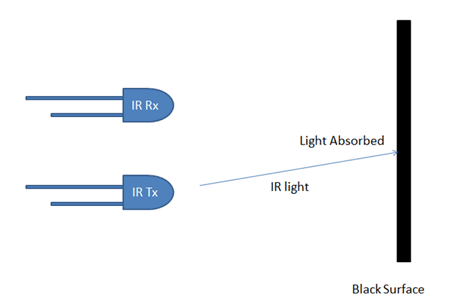
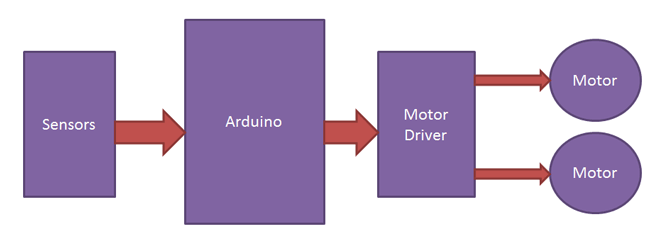
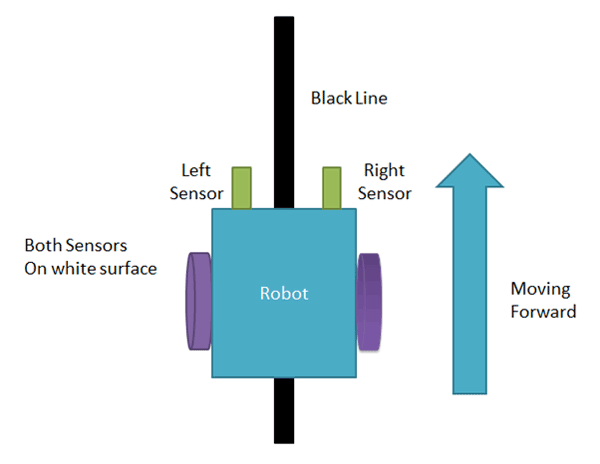
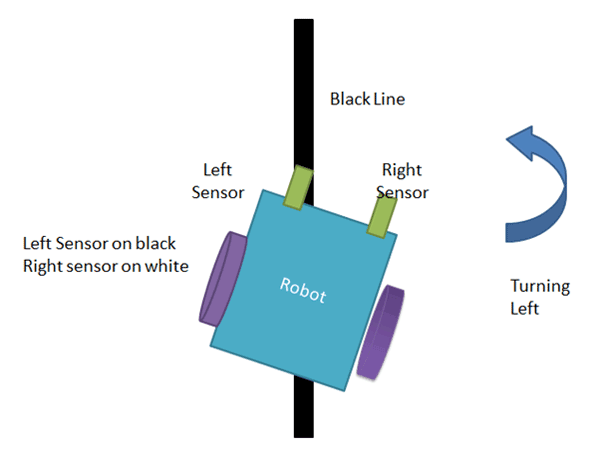
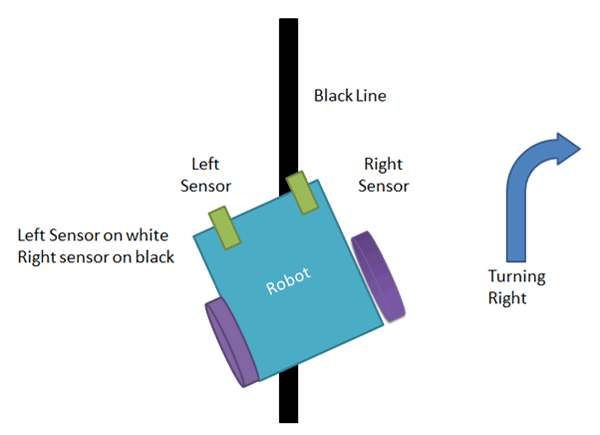

No comments:
Post a Comment